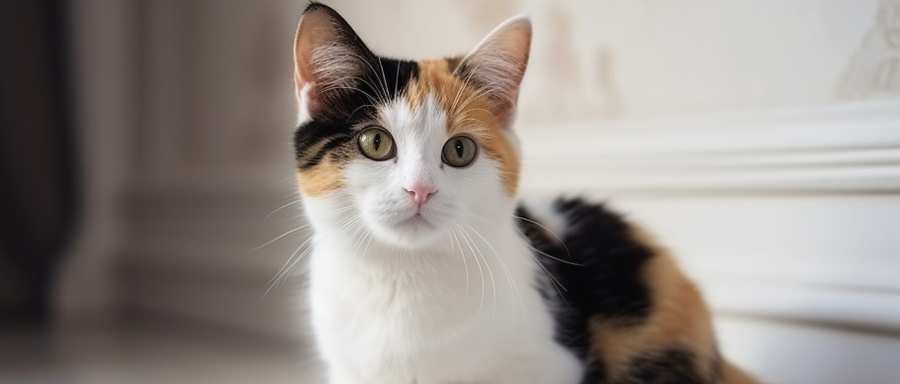Lupines can be toxic to cats, causing symptoms like vomiting, diarrhea, and lethargy.
Lupines are beautiful flowering plants known for their vibrant colors and delicate petals. They often adorn gardens and landscapes, attracting attention for their aesthetic appeal. However, an important question arises for pet owners: Are lupine poisonous to cats? Understanding the potential dangers of these plants is crucial for ensuring the safety and well-being of feline companions.
The toxicity of lupines primarily stems from alkaloids present in the plant. These compounds can affect various species differently, and while some animals may consume them without serious repercussions, others could face severe health risks. Cats, in particular, are known to be sensitive to certain plants, making it essential to be informed about which flora is safe for them.
The Basics of Lupine Toxicity
Lupines belong to the legume family (Fabaceae), with over 200 species worldwide. They thrive in various environments, from wild meadows to cultivated gardens. Their striking appearance may lure curious cats into investigating or even tasting them. Unfortunately, this curiosity can lead to adverse reactions.
The alkaloids found in lupines primarily include lupinine and other related compounds. When ingested by cats, these substances can disrupt normal bodily functions. Symptoms of lupine poisoning in cats can range from mild gastrointestinal upset to more severe neurological issues.
Symptoms of Lupine Poisoning in Cats
Recognizing signs of poisoning is vital for prompt treatment. Symptoms may vary depending on the amount ingested and the individual cat’s sensitivity. Common signs include:
- Vomiting: One of the first reactions a cat may have after consuming toxic plants.
- Diarrhea: The gastrointestinal system often reacts strongly to toxins.
- Lethargy: Affected cats may appear unusually tired or weak.
- Loss of Appetite: Cats may refuse food due to nausea or discomfort.
- Tremors or Seizures: In severe cases, neurological symptoms can manifest.
It’s essential for cat owners to monitor their pets closely if they suspect ingestion of lupines or any other potentially toxic plants. Early intervention can significantly improve outcomes.
Identifying Lupines in Your Environment
Being able to identify lupines is a crucial step in preventing accidental poisoning. These plants typically have tall spikes covered with clusters of flowers that vary in color from blue and purple to white and yellow. The leaves are palmate (like a hand with fingers) and consist of several leaflets radiating from a central point.
Here’s a quick visual guide:
| Characteristic | Description |
|---|---|
| Height | Can grow up to 4 feet tall. |
| Flowers | Clusters on tall spikes; colors include blue, purple, white. |
| Leaves | Palmatelly compound; typically green. |
| Seeds | Pods containing seeds; often found after flowering. |
If you spot these characteristics around your home or garden, it’s wise to take precautions. Removing these plants or ensuring your cat does not have access to them can help mitigate risks.
Safe Alternatives for Gardens
Creating a cat-friendly garden involves selecting plants that are non-toxic and safe for curious felines. Here are some excellent alternatives that add beauty without posing health risks:
- Catnip (Nepeta cataria): Not only safe but also enjoyable for many cats.
- Basil (Ocimum basilicum): A fragrant herb that’s harmless and adds culinary value.
- Marigolds (Tagetes): Bright flowers that deter pests while being safe for pets.
- Spider Plant (Chlorophytum comosum): An attractive houseplant that is non-toxic.
By choosing safer options, one can maintain an appealing garden while protecting beloved pets from potential hazards.
The Importance of Educating Others
Pet owners must share information regarding plant toxicity with friends and family members who may also have pets. Awareness can prevent accidental exposures and promote safer environments for animals. Creating informative pamphlets or hosting discussions about pet safety can spread knowledge effectively within communities.
Additionally, local gardening clubs or online forums focused on pet safety could serve as platforms for sharing experiences regarding plant toxicity. The more people know about harmful plants like lupines, the better equipped they will be in protecting their furry friends.
Treatment Options for Lupine Poisoning in Cats
If a cat exhibits symptoms suggestive of lupine poisoning after exposure, immediate veterinary care is paramount. Treatment will depend on the severity of the symptoms and how recently ingestion occurred.
1. Inducing Vomiting: If ingestion happened within a few hours, veterinarians might induce vomiting to remove toxins from the stomach.
2. Activated Charcoal: Administering activated charcoal helps absorb remaining toxins in the digestive system.
3. Supportive Care: This could include intravenous fluids if dehydration occurs due to vomiting or diarrhea.
4. Monitoring Neurological Symptoms: In cases where seizures occur, careful monitoring will be necessary along with medication management.
Prompt action can make all the difference when it comes to recovery from poisoning incidents involving plants like lupines.
The Role of Veterinary Care in Prevention
Regular veterinary check-ups play an essential role in maintaining overall pet health. Veterinarians often provide guidance on safe plant choices based on individual pet needs and lifestyles. They can also educate pet owners about common household items that might pose risks beyond just outdoor flora.
Having an open dialogue with veterinarians ensures that any concerns regarding potential toxins—whether they stem from food sources or environmental factors—are addressed proactively rather than reactively.
Conclusion – Are Lupine Poisonous To Cats?
In summary, understanding whether “are lupine poisonous to cats?” is vital for all cat owners who cherish their pets’ safety above all else. While these beautiful plants enhance landscapes with their stunning blooms, they pose significant health risks if ingested by our feline friends.
Being informed about the signs of poisoning allows quick action when necessary while identifying these plants helps prevent potential exposure altogether. By opting for safer alternatives in gardens and fostering awareness among fellow pet owners, one contributes positively towards creating safer environments for our beloved companions.
Ultimately, knowledge is power when it comes to keeping pets safe from harmful substances like those found in lupines!

